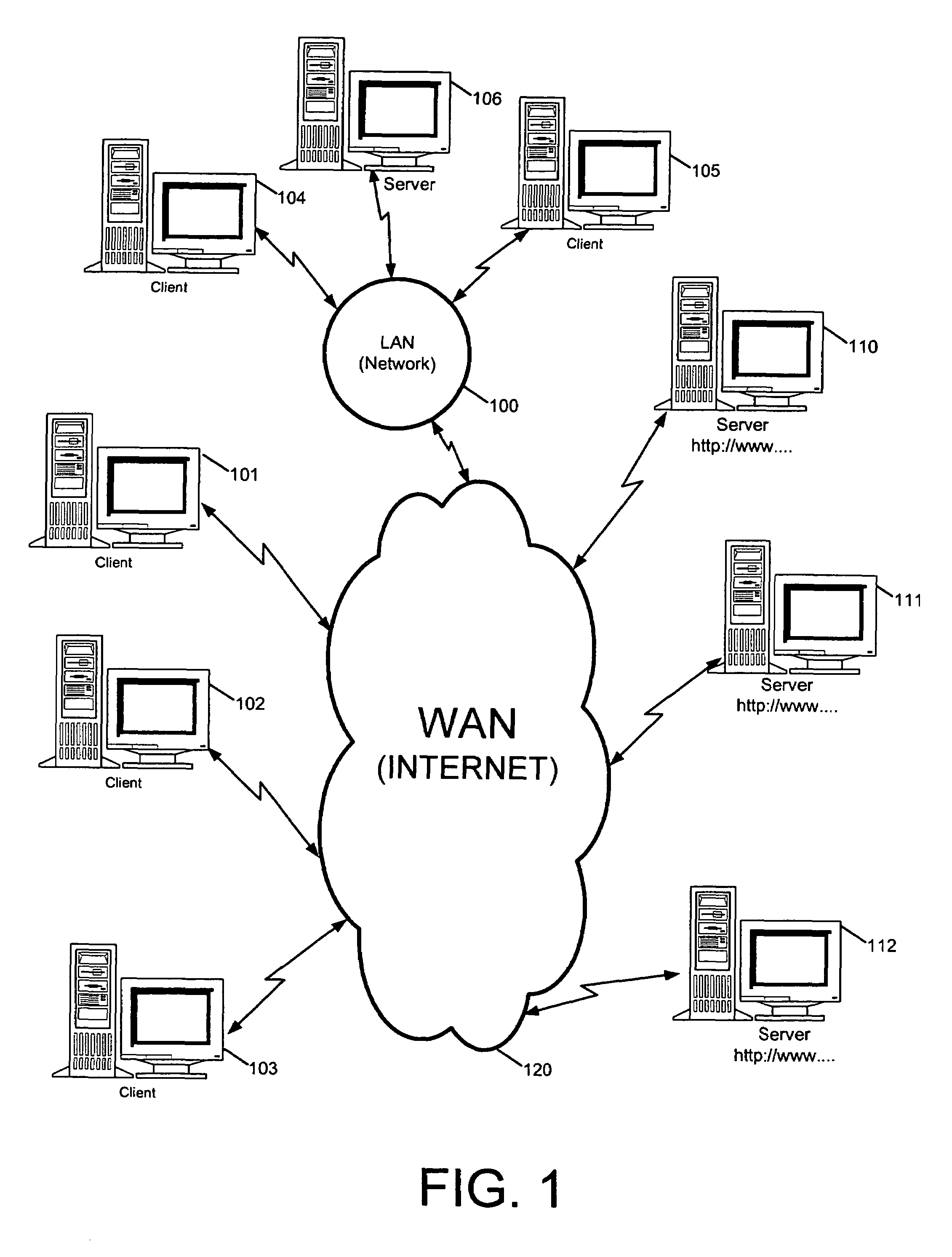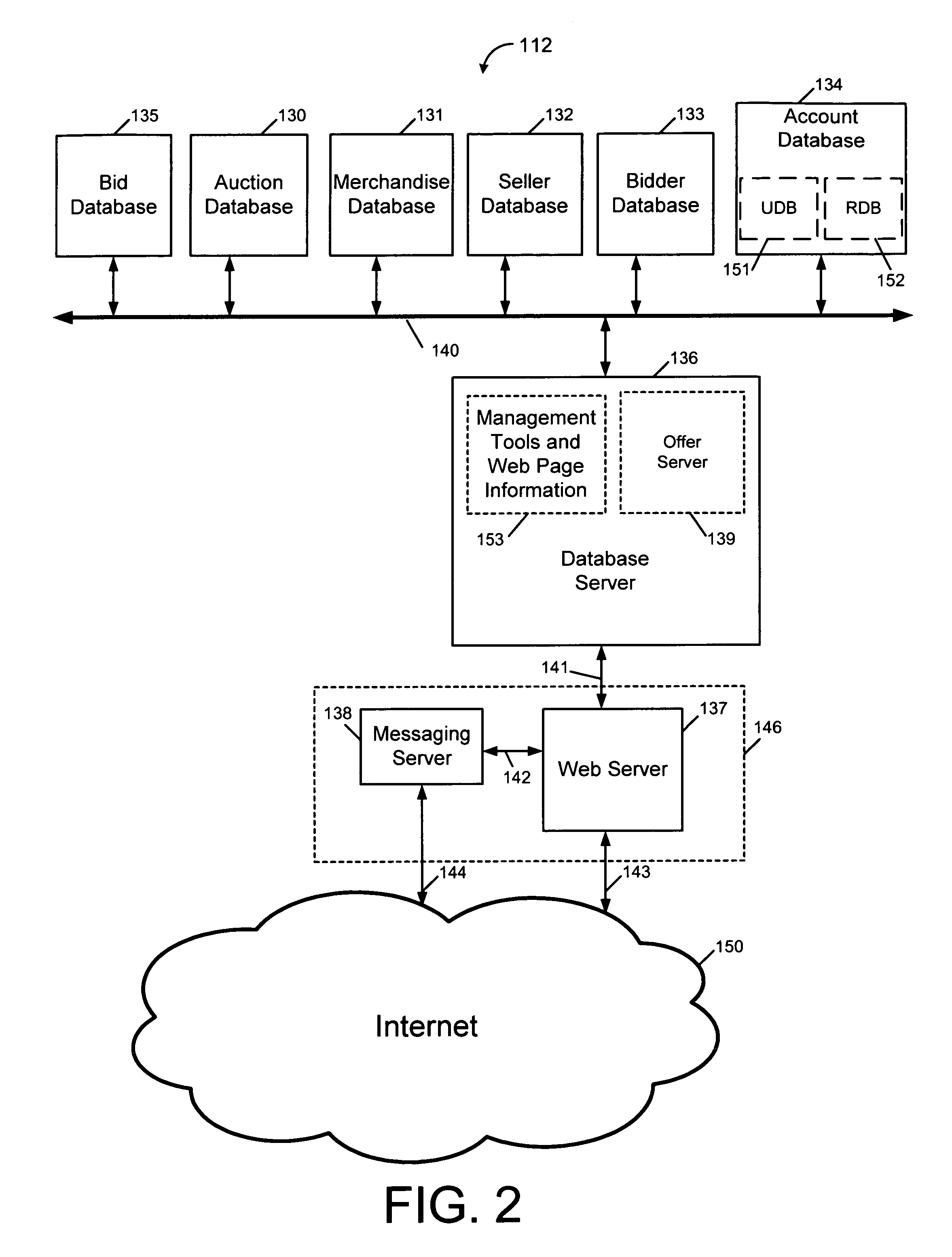Auction redemption system and method
a technology of auction redemption and auction, applied in the field of online auctions, can solve the problems of not being willing or able to pay for items, winning bidders sometimes do not or cannot pay for items, and the financial obstacle to auction participation has almost disappeared, so as to achieve zero marginal cost of running and increase returns
- Summary
- Abstract
- Description
- Claims
- Application Information
AI Technical Summary
Benefits of technology
Problems solved by technology
Method used
Image
Examples
first embodiment
[0254]the Dutch Auction format in the Yahoo! Auction System and how it implicates the users' respective accounts will now be described with respect to FIG. 6. The auction begins at step 210.
[0255]At step 211, the Yahoo! Auction System offers N items at starting bid price P each with a minimum increment dP in accordance with the seller's pre-auction instructions. For the auction of multiple items, these N items will be awarded to the top N bidders at the bid price of the lowest bid among the top N bidders. At step 212, the Yahoo! Auction System waits for or inquires about any new bid(s). If no new bid is forthcoming, the Yahoo! Auction System proceeds to step 222, which checks for any auction termination condition (as discussed above). If any auction termination condition is present, the auction terminates at step 223; otherwise, the Yahoo! Auction System returns to step 212 to check for any new bids.
[0256]If a new bid is received, such as BIDNEW by a new bidder (whoever this may be)...
second embodiment
[0265]the Dutch Auction format in the Yahoo! Auction System will now be described with respect to FIG. 7. The auction begins at step 225.
[0266]At step 230, the Yahoo! Auction System offers N items at starting bid price P each with a minimum increment dP in accordance with the seller's pre-auction instructions. For the auction of multiple items in accordance with the Dutch Auction format, these N items will be awarded to the top N bidders at the bid price of the lowest bid among the top N bidders. At step 231, the Yahoo! Auction System waits for or inquires about any new bid(s). If no new bid is forthcoming, the Yahoo! Auction System proceeds to step 237, which checks for any auction termination condition (as discussed above). If any auction termination condition is present, the auction proceeds to step 238; otherwise, the Yahoo! Auction System returns to step 231 to check for any new bids.
[0267]If a new bid is received, such as BIDNEW by a new bidder (whoever this may be) at step 23...
PUM
 Login to View More
Login to View More Abstract
Description
Claims
Application Information
 Login to View More
Login to View More - R&D
- Intellectual Property
- Life Sciences
- Materials
- Tech Scout
- Unparalleled Data Quality
- Higher Quality Content
- 60% Fewer Hallucinations
Browse by: Latest US Patents, China's latest patents, Technical Efficacy Thesaurus, Application Domain, Technology Topic, Popular Technical Reports.
© 2025 PatSnap. All rights reserved.Legal|Privacy policy|Modern Slavery Act Transparency Statement|Sitemap|About US| Contact US: help@patsnap.com



